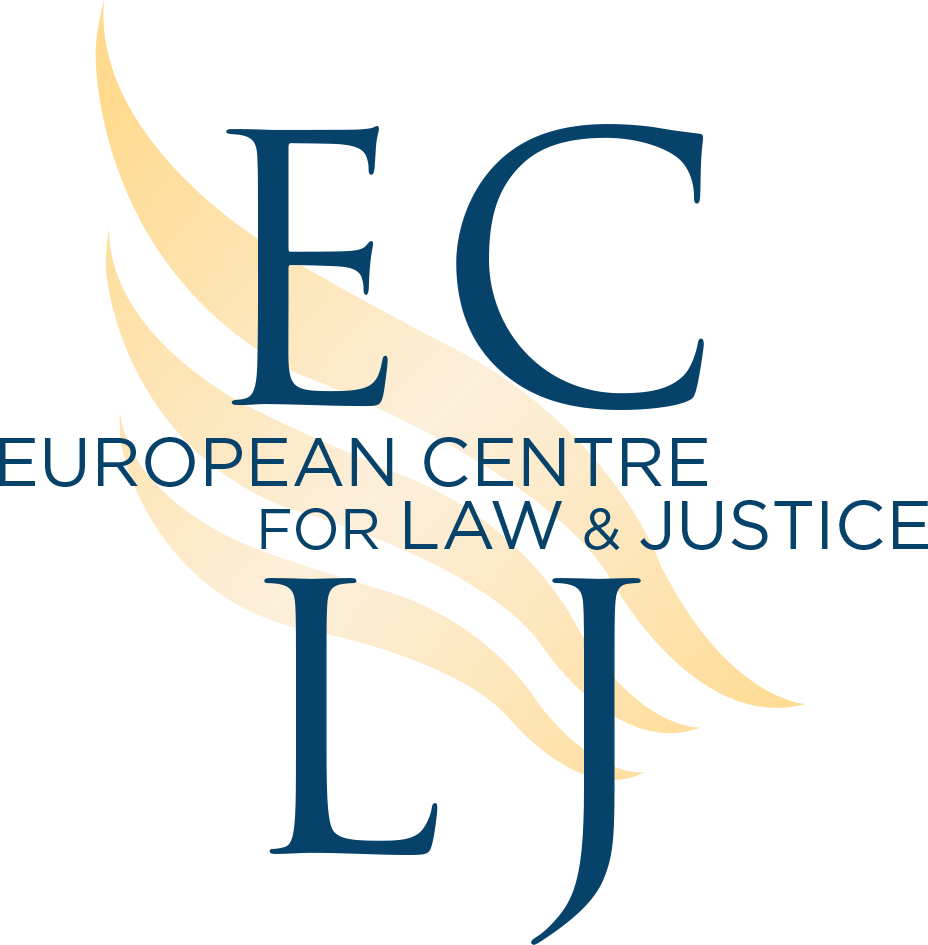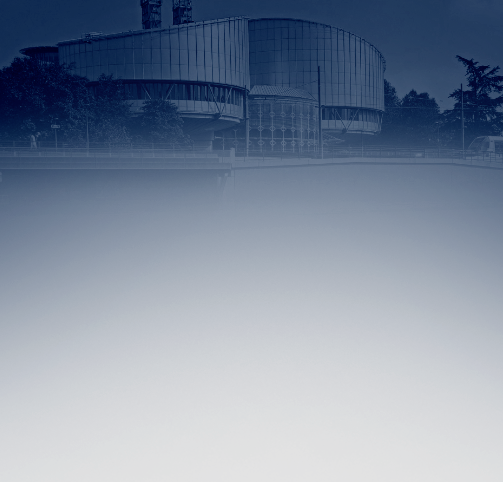The crucifix case: imminent final judgment
By Grégor Puppinck, PhD,
Director of the ECLJ
Strasbourg, March 15 - On Friday 18th March at 3p.m. the Grand Chamber will make public its decision on the Lautsi case.
Lautsi v. Italy, better known as « the Crucifix case », caused scandal across Europe following the decision of the European Court of Human Rights, on the 3rd November 2009, to ban the display of Crucifixes in public classrooms. The importance of Lautsi rests not only in the political and legal aspects of the case, but also in the spiritual. Lautsi has become a symbol of the current conflict concerning the future of Europe’s cultural and religious identity. On one side, the conflict contains proponents of the complete secularization of Europe, and on the other, those who wish for a more open Europe, one that is faithful to its identity, spiritual and moral values, and historical roots. Confronted with this attempt at a de-Christianization of Europe, 21 European countries joined in an unprecedented movement to reaffirm the legitimacy of Christianity in the European Public sphere.
The applicant, Ms Soile Lautsi, brought her complaint against the Italian Republic on behalf of her two children before the Strasbourg Court. She alleges that the display of the Crucifix in classrooms of public schools interferes with her children’s freedom of belief as well as their right to education and teaching consistent with her philosophical convictions under Article 2 of Protocol No. 1 of the Convention, taken in conjunction with Article 9. Prior to the Lautsi judgement, the Court considered such matters to fall within the sovereignty of Member States in order to respect the culture and traditions of each particular country. Moreover, the Court considered that the only limitation on educational matters was that States were not permitted to submit students to indoctrination or abusive proselytism.
The European Centre of Law and Justice was deeply involved in this case. As a third party in that case (amicus curiae), the ECLJ submitted written observations to the Court and also organised a seminar at the Council of Europe .
The Court’s November 2009 decision condemned Italy and found in favour of Ms Lautsi, stating that the presence of a religious symbol in public classrooms has no justification. Italy challenged this decision and the case was heard before the Grand Chamber on June 30th 2010. The Court heard pleadings from the applicant, the Italian government in defense and an oral submission on behalf of the European States holding amicus curiae status.
Defending their position, the Italian government stated that the school curriculum in Italy is delivered in an objective, critical, pluralistic manner to create an atmosphere preventing any kind of indoctrination or proselytism. Thus, the presence of the crucifix does not constitute indoctrination. Children are never discouraged from having their own beliefs.
The government of Italy also argued that the Court would err to impose secularism on all Member States, because this concept is one which is foreign to most countries of Europe and is contrary to its diversity and heritage. The government also highlighted that the public sphere is to be a space for all, an open forum for expression. To remove any trace of religion would only favour atheism. This is not State neutrality and only serves to encourage intolerance.
Professor Joseph Weiler delivered a pleading on behalf of the Member States holding amicus curiae status. Weiler expressed concern over confusion surrounding the idea of State neutrality. He stressed that there should be a margin of appreciation for the heritage and culture of the country as well as the will of the majority. It is the State’s duty to encourage tolerance and acceptance, not to remove all traces of national identity for the sake of this conception of neutrality or secularism. Professor Weiler continued that part of what makes Europe so rich and unique is its ability to have on the one hand respect for religious freedom of all, and on the other, a cultivation of its diverse identities.
The issue of margin of appreciation is one of the most crucial elements of this case. There is a broad consensus among State Parties that there should be a wide margin of appreciation afforded to States with regard to sensitive issues where there is no defined, clear, common ground and there are considerable differences in the laws and practises from State to State in order to respect the culture, heritage and traditions of each particular country.
The amount of participation from intervening member States is unprecedented, demonstrating the magnitude of this case for all of Europe. At the inception of the case, 10 countries entered the Lautsi case as third parties, having been admitted amicus curiae status. Each of these countries, Armenia, Bulgaria, Cyprus, Greece, Lithuania, Malta, Monaco, Romania, the Russian Federation, and San Marino, submitted a brief to the Court inviting it to overturn its first decision. States such as Bulgaria, Cyprus and Romania submitted that the State should enjoy a wide margin of appreciation for the national regulation of religious matters. Moreover it was contended by the Federation of Russia that “the notion of margin of appreciation of the Contracting States in question of freedom of religion was substantially narrowed by the present judgment of the Honourable Chamber to one ‘strict formula’ not taking into account the differences in history and culture of the European countries, the legitimate diversity of national approaches and the unforeseeable consequences the judgment can lead to.” All ten States were also seriously concerned by the implications the judgment of the Chamber of the 3rd November 2009 has on preserving national identity as well as the historical and political culture of the State.
After the initial wave of ten States becoming third parties, the governments of Albania, Austria, Croatia, Hungary, Moldova, Norway, Poland, Serbia, Slovakia, and Ukraine joined Italy’s side in openly criticizing the initial judgment. They petitioned the Court to recall that it must respect the national identities and religious traditions of each of the 47 Member States. Significantly, including Italy, almost half of the Member States of the Council of Europe have openly opposed this attempt of forced secularization and the suppression of a religious symbol of national identity in the public sphere for the reason that it has a religious meaning. These States have insisted on the fact that religious identity is at the root of European values and unity and affirmed the social legitimacy of Christianity in European society. On the contrary, no State has come out in support of the Court’s ruling banning the display of crucifixes. (See below the compilation of the submissions of the intervening States).
In accordance with Article 36 of the Convention, the Court also accepted written submissions from numerous NGOs including the European Centre for Law and Justice which was deeply involved in the preparation of this hearing and was officially third party with 79 Members of European Parliaments.
In its written observations, the ECLJ demonstrated that the presence of the Crucifix in Italian schools is legitimate - that it is not disrespectful to other beliefs, and that nothing in the European Convention of Human Rights can be interpreted as imposing secularism in the context of public education. The ECLJ submits that the judgement delivered in November 2009 has taken the Court not only beyond the application submitted to it but also beyond the Convention – and hence beyond the law – and into the realms of politics and ideology. Neither the Convention nor its interpretation permits a judgement that the presence of a crucifix violates the rights invoked by the applicant.
The Court also heard written submissions by a number of other NGOs and Parliamentarians1.
The ECLJ is hopeful that the Court has understood that the right of nonbelievers not to believe cannot eclipse the rights of believers; that “laicite” is not required by the Convention. The ECLJ is also confident that the Court will understand that it cannot and should not require a State to renounce its own deep identity in the name of tolerance and human rights philosophy. “We cannot protect the religious freedom in Europe by deleting Christianity in European society” underlines Grégor Puppinck, Director of the European Centre for Law and Justice.
The Grand Chamber has a decision of great importance on its hands. Upholding the doctrine of “confessional neutrality” would be radical, considering that many Member States are not confessionally neutral and that almost half of the Member States have already demonstrated that they are not prepared to comply with such an obligation.
ECLJ Related documents
- Summery of the submissions of the intervening States in the Lautsi v Italy case.
- CEDH - Affaire LAUTSI contre ITALIE, Observations écrites de l'ECLJ, Juin 2010
- ECHR - Lautsi v. Italy, ECLJ Legal memorandum, April 2010
- Lautsi v. Italy , The Leading Case on Majority Religions in European Secular States, by Grégor Puppinck, presentation prepared for the 2010 annual International Law and Religion Symposium
- Lautsi v. Italy, An alliance against secularism, by Grégor Puppinck, published in L'OSSERVATORE ROMANO, on 28 July 2010.
1 The International Commission of Jurists, Interights and Human Watch, a group of MEPs, Zentralkomitee des deutschen Katoliken, Semaines Sociales de France and Associazioni cristiane lavoratori italiani ,Greek Helsinki Monitor, Associazione Giordano Bruno and Eurojuris.








